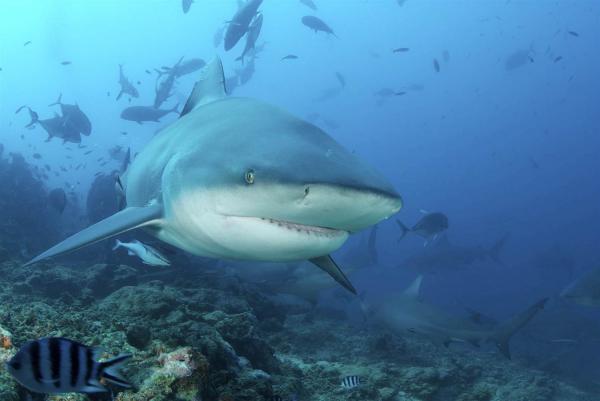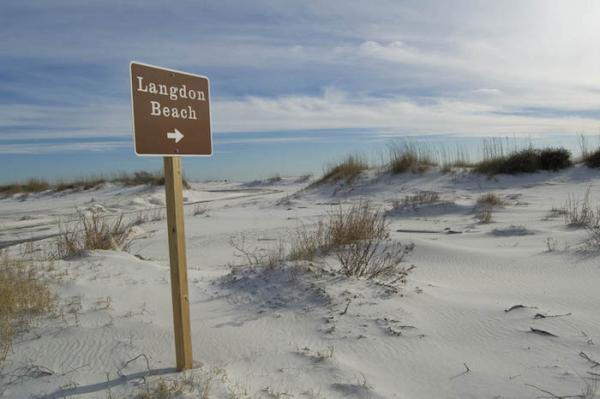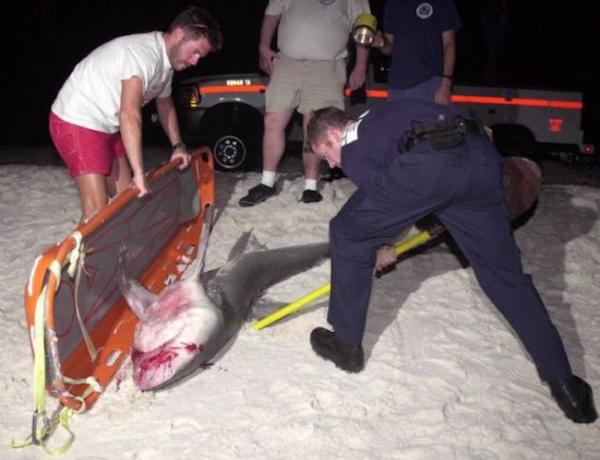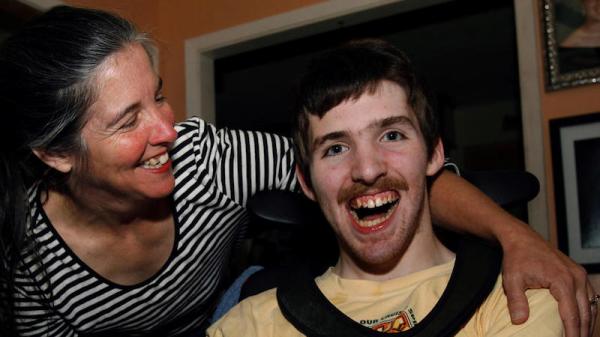Hero Uncle Wrestles 7 Foot Bull Shark To Save Boy’s Severed Arm

On the 6th of July, 2001, a young boy’s uncle came to the rescue in a way that captured headlines across America.
8-year old Jesse Arbogast, was having his final swim of the day after an enjoyable family trip to Langdon Beach, Florida.
It was dusk, the light was slowly fading as the boy played in the shallows. Suddenly, he was seized by an unseen presence in the water. Within seconds, his right arm had been bitten off between the elbow and the shoulder and he had lost part of his right thigh. He was being attacked by a 7-foot, 200-pound bull shark.

Jesse’s uncle was the quickest to react, plunging into the blood-curdled water to pull his nephew onto the shore.
He then dived back in to seize the shark.
The brave man, whom in later media reports refused to be named, then wrestled with the 7ft shark, hauling it onto the beach so that it was possible to retrieve the severed arm.
In the interim, park ranger Jared Klein had arrived to assist. With the shark thrashing on the sand he shot it three times in the head.
Reports state that Mr Klein then used his baton to prise open the shark’s jaws while another bystander (volunteer fireman, Tony Thomas) reached into its mouth and pulled out the arm.
By this time an emergency helicopter had already flown Jesse to hospital.
After being wrapped in a plastic bag and encased in ice, the arm was driven by ambulance to the operating theatre.
Jesse’s condition was critical during the flight to the hospital. A heart massage conducted by his aunt, which was continued in the helicopter was later stated as being crucial to his life saving efforts.

Jessie Arbogast, being wheeled into his home more than five weeks after the accident.
Jesse was given 30 pints of blood during 11 hours of surgery after being brought into the Baptist Hospital, Pensacola.
Shortly after the surgery, Dr Ian Rogers, the plastic surgeon who reattached the arm, said he was hopeful that Jesse would regain relatively normal use of it.
The reattachment operation began with the bone being shortened and a plate installed so that it could act as a base for soft tissues to connect. Arteries, veins, muscles and nerves were then successfully sewn together.
“Jesse’s life had been saved,” Dr Rogers said, “not only by his uncle but also by the emergency team leader who decided to handle the incident as a “scoop and run” rather than trying to treat the boy on the beach.”
John Bandurski, District Ranger supervisor, said the uncle’s actions had been remarkable. “He just wrestled it. His uncle’s a big guy and he got hold of it and tossed it ashore.”

The 7 foot bull shark on the sands of Langdon Beach.
Mr Thomas, the fireman that retrieved the arm, said they did not know at that point whether the shots had killed the shark. “We weren’t sure it was dead.”
Chief Ranger J R Tomasovic said shark attacks were more likely when the evening light was fading, the water was murky and sharks saw something they could not identify. He said, “Sharks live in the water. Visitors should take the risk seriously.”
Controversy in the aftermath
As the news of Jesse’s heroic rescue made front-page news, with donations pouring in to help the family, an alternative description of events began to circulate.
In a gutless act by an unknown perpetrator an email managed to gain traction that was alleged to reveal the truth of what happened that day.
”The uncle that wrestled the shark ashore was fishing for sharks, had it on a line and had been fighting it for two hours plus,” the e-mail message read.
The anonymous writer claimed that Jesse’s uncle had chummed the water to attract sharks and that Jessie was bitten when he ran into the surf ”in jubilation” to help drag the hooked shark to shore.
”His nephew got bit because the whole family went into the water to wrestle the fish to land,” the message said. ”The press has suppressed the real truth, because they are afraid it will effect the contributions for Jessie and the uncle is so filled with guilt, he has tried to commit suicide once already. Now it all makes sense.”
As the message circulated, Jessie condition slowly improved. However, doctors said the boy would probably be left with cognitive defects from the blood loss to the brain caused by his wounds.

Jesse suffered from cognitive defects due to losing so much blood in the attack.
Investigators were employed to look into the source of the allegations. George H. Burgess, director of the International Shark Attack File at the Florida Museum of Natural History, assisted in the investigation. He found that there was no evidence that the boy’s uncle had been shark fishing on the beach.
Furthermore, The National Park Service had found no tackle, and no other evidence that the family had been fishing.
However the damage caused by the rumours on Jessie, his uncle and family had already been inflicted.
The news surrounding the false account meant that the uncle’s name was inevitably revealed. Vance Flosenzier, now found himself in the spot-light for reasons completely out of his control.
“A new nightmare began for the family, especially for Vance,” Ms. MacPherson told the New York Times. “None of it, not one word, is true.”
“He had chosen not to parade his new celebrity in front of television cameras. There are no book or movie deals in his future.” Ms. MacPherson said.
But his silence made some people suspicious, and made the e-mail easier to believe.
The Pensacola News Journal did its own investigation, found no evidence to support the e-mail account and tracked the message to several people who said they received it soon after the attack but denied having produced it. The trail seems to end at the address Studpony32@aol.com, an e-mail address that is now defunct.
”It’s just one of those urban legends,” Mr. Burgess said, ”Just plain nasty.”
However, as a member of Jessie’s family so aptly put: ”The family knows what happened. It’s a miracle. That’s all that matters.”
Оставить комментарий
Для комментирования необходимо войти через
![]() Вконтакте
Вконтакте